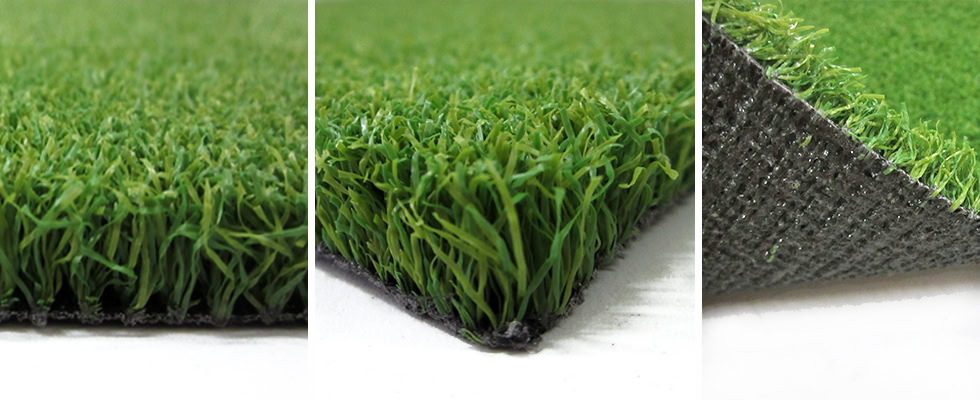Artificial grass, also known as synthetic turf, has become increasingly popular as a low-maintenance alternative to natural grass for landscaping applications such as lawns, playgrounds, and sports fields.
However, there have been concerns raised about the potential health risks associated with artificial grass and its possible link to cancer.
In this article, we will explore this topic in-depth, by examining various studies, expert opinions, and factors to consider.
Understanding Artificial Grass
To determine if artificial grass can cause cancer, it’s important to understand its composition. Artificial grass is made of synthetic fibers such as polyethylene, polypropylene, or nylon, which are woven into a backing material. The grass is sometimes filled with rubber granules or sand to increase stability and provide cushioning.

The Controversy Surrounding Artificial Grass
There is a debate about the potential link between artificial grass and cancer. This debate is related to the use of crumb rubber infill, which is commonly used in synthetic turf fields to provide cushioning and impact absorption.
Crumb rubber is made from recycled rubber tires and may contain harmful substances such as lead, zinc, arsenic, polycyclic aromatic hydrocarbons (PAHs), and volatile organic compounds (VOCs).
Research on the Health Effects of Artificial Grass
Numerous studies have been conducted to explore the possible health hazards related to exposure to artificial grass, particularly in sports fields where players come into direct contact with the turf.
The California Office of Environmental Health Hazard Assessment (OEHHA) carried out a comprehensive assessment of the health impacts of crumb rubber infill in artificial turf fields and concluded that the chances of developing cancer from exposure to synthetic turf are low.
Synthetic Turf Industry Perspectives
The synthetic turf industry maintains that artificial grass is safe and does not pose a significant risk of cancer or other health concerns.
Industry representatives argue that the levels of harmful substances in artificial turf are minimal and do not exceed regulatory standards set by government agencies.
Public Health Concerns
Despite reassurances from the synthetic turf industry, public health advocates and environmental organizations continue to raise concerns about the potential health risks associated with artificial grass.
Some experts point to the lack of long-term studies on the health effects of artificial turf and highlight the need for more research to fully understand the implications of prolonged exposure to synthetic turf materials.

Potential Risk Factors to Consider
While the debate over the cancer-causing potential of artificial grass continues, it is essential to consider various factors that may influence the overall risk to human health. These factors include:
- Exposure Duration: Individuals who spend significant amounts of time on artificial turf fields, such as athletes and children, may face higher exposure levels to potential contaminants.
- Age: Young children and developing fetuses may be more vulnerable to the effects of harmful substances in artificial grass due to their smaller size and developing immune systems.
- Maintenance Practices: Proper maintenance of artificial turf fields, including regular cleaning and monitoring of infill materials, can help minimize the risks associated with exposure to synthetic turf.
Conclusion
The question of whether artificial grass causes cancer remains a topic of ongoing debate and research.
While some studies suggest that the risk of cancer from exposure to synthetic turf is low, concerns persist regarding the potential health effects of certain substances found in artificial grass materials.
As the debate continues, policymakers, sports organizations, and the public must stay informed about the latest research findings and take proactive measures to minimize potential risks associated with artificial grass.
Ultimately, further research is needed to fully understand the long-term health effects of artificial grass and ensure the safety of individuals who come into contact with synthetic turf regularly.
Remember, when considering whether to install artificial grass in your home or community, it is essential to weigh the potential benefits of low maintenance and water conservation against the possible health risks and uncertainties associated with synthetic turf materials.
As with any decision related to health and wellness, it is always advisable to seek guidance from healthcare professionals and environmental experts to make informed choices that prioritize safety and well-being.
FAQs
What are the dangers of artificial grass?
- Potential dangers of artificial grass include heat absorption, leading to hot surface temperatures, and the presence of certain materials in older installations, like crumb rubber infill, which has raised concerns about chemicals and heavy metals.
Is artificial grass linked to cancer?
- The link between artificial grass and cancer is a topic of ongoing research. Some concerns have been raised regarding the use of crumb rubber infill, which may contain substances of potential concern. However, research on the health effects is not conclusive, and safer alternatives are being explored.
Why you shouldn’t use fake grass?
- Reasons one might choose not to use fake grass include the initial cost, concerns about environmental impact, and personal preference for the natural look and feel of real grass. Additionally, some people prefer real grass for its biodiversity and ecosystem benefits.
Is it safe to play on artificial grass?
- In general, artificial grass is considered safe for playing. However, precautions should be taken to avoid overheating, especially in hot weather. Newer installations often use safer infill materials, addressing concerns about potential health risks associated with older crumb rubber infill. It’s essential to follow safety guidelines and choose high-quality, non-toxic materials.

